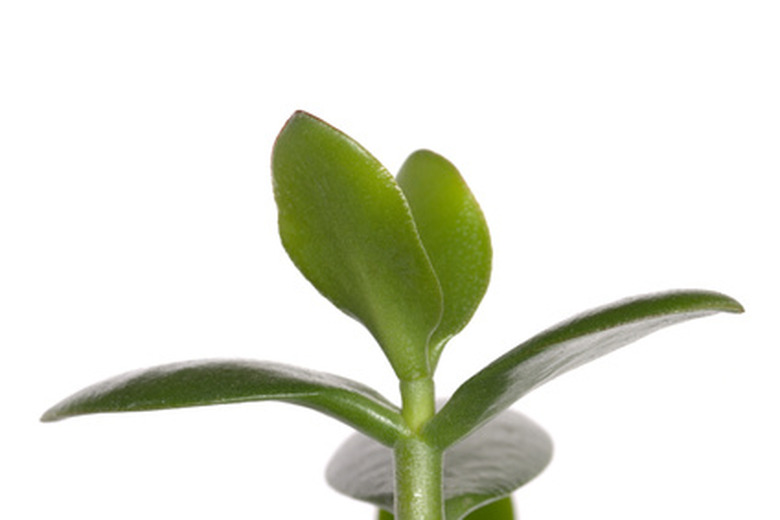Diseases Of Jade Plants
Jade plant (Crassula argentea) is a slow-growing ornamental plant that originated in Southern Africa, but now exists all over the world. It is a herbaceous plant from the Crassulaceae (Stonecrop) family. Characterized by its waxy green leaves, a jade plant can tolerate poor, dry soils and grow up to 12 feet high. Just like other plants, it is susceptible to certain diseases that can affect its growth and propagation.
Bacterial Soft Rot
Caused by Erwinia bacteria, bacterial soft rots can affect the leaves, stems and blossoms of jade plants. The tissue turns brown, becomes mushy and develops an unpleasant odor. The tissue of stems deteriorates near the soil. Bacterial soft rot can cause jade plants to grow slowly and collapse.
- Jade plant (Crassula argentea) is a slow-growing ornamental plant that originated in Southern Africa, but now exists all over the world.
- Caused by Erwinia bacteria, bacterial soft rots can affect the leaves, stems and blossoms of jade plants.
Spots and blotches grow bigger and turn dark gray or blackish in color. At times, they show yellow borders when they grow much bigger. Initially the spots appear round; however, they turn angular and coalesce. Bacterial soft rots can kill the plant tissue through necrosis, which cause cankers to form on stems. Necrosis can leave a wound or hole, characterized by ragged appearance. When the condition worsens, it can cause the jade plant to wilt.
It is best to throw away the plant or avoid propagating using cutting with bacterial soft spot to prevent the disease from spreading. Do not plant too deeply and avoid over-watering. Allow water to drain and avoid overhead irrigation. Ensure the leaves are always dry by providing good air circulation. Wiping wet leaves immediately can also help prevent bacterial soft spots.
- Spots and blotches grow bigger and turn dark gray or blackish in color.
- Bacterial soft rots can kill the plant tissue through necrosis, which cause cankers to form on stems.
Powdery Mildew
Caused by fungi, powdery mildew appears as a dusty white to gray coating over leaf surfaces or other parts of the plant. In most cases, you can remove the powdery mildew by rubbing the leaves. It begins as discrete, usually circular, powdery white spots. The spots coalesce as they expand, producing a continuous mat of mildew that looks like dust or dirt. Properly identifying powdery mildew sometimes requires the aid of a microscope in order to find out whether it is fungal in origin or not.
High humidity can encourage powdery mildew. Crowded planting, dense plant growth and too much or not enough sunlight can promote high humidity. Prevent these conditions by providing enough room between plants to allow for air circulation. Also, give your jade plant at least four hours of direct light.
- Caused by fungi, powdery mildew appears as a dusty white to gray coating over leaf surfaces or other parts of the plant.
- In most cases, you can remove the powdery mildew by rubbing the leaves.
Powdery mildew can cause distortion of leaves, buds, growing tips and fruit. It may cause death of invaded tissue. Yellowing of leaves and death of tissue may result in premature leaf drop.
Chemicals containing thiophanate methyl or triadimefon may help cure infected plants in the early stages or before powdery mildew spread deeply into the vascular systems. Prevent cross-contamination by throwing away infected plants or by cleaning pruning shears before using on other plants.
Black Ring
Caused by a virus, black ring disease leaves black rings on the underside of the jade plant's leaves. Unlike bacterial soft rot, it does not kill the plant; however, you should not use the cuttings to propagate to prevent producing infected new growth. Instead, use disease-free cuttings from a healthier plant. This is the least serious condition of the three because it affects that plant's appearance only and not its overall survivability.
- Powdery mildew can cause distortion of leaves, buds, growing tips and fruit.
- Unlike bacterial soft rot, it does not kill the plant; however, you should not use the cuttings to propagate to prevent producing infected new growth.
